Você provavelmente já sabe que ajustar as tarifas dos seus quartos com base nas flutuações da demanda pode aumentar sua receita. Mas você já pensou em aplicar essa abordagem ao upsell? E que tal dar um passo adiante e usar os princípios de preços abertos também no upsell?
Continue lendo para descobrir como essas técnicas podem levar sua estratégia de receita e faturamento para o próximo nível.
O papel do upsell na gestão de receitas
O upsell é um impulsionador essencial da receita auxiliar e pode aumentar significativamente sua receita e lucratividade geral. Permite maximizar os ganhos durante a época alta e aproveitar ao máximo cada reserva mesmo quando a procura é baixa.
A venda adicional de viajantes para categorias de quartos superiores também libera seus quartos standard para revenda. Isso pode ajudá-lo a atrair mais novos hóspedes, aumentando as chances de lotação do seu hotel. Nesse sentido, oferecer upgrades pagos é uma forma de evitar a perda de receita ao receber hóspedes gratuitamente.
Usar uma plataforma de upsell automatizada é a maneira mais fácil de obter todos esses benefícios do upsell em seu hotel. Essas ferramentas tecnológicas chegam automaticamente aos seus hóspedes antes da chegada. Em seguida, eles promovem seus upgrades pagos no momento ideal e atualizam a reserva do viajante, caso ele aceite. A melhor coisa sobre essa abordagem orientada à tecnologia é maximizar a receita auxiliar sem sobrecarregar sua equipe com trabalho manual adicional.
Como você pode ver, implementar o upsell automatizado antes da chegada é um passo significativo para aumentar o nível de sua estratégia de receita. Depois de fazer isso, é hora de seguir em frente com outra abordagem inovadora.
Como turbinar sua estratégia de receita com preços abertos
Tradicionalmente, os hotéis utilizam a melhor tarifa disponível (BAR) como base da sua hierarquia de preços. Todas as outras tarifas mudam simultaneamente por meio de suplementos de categoria fixa ou descontos pré-definidos.
O preço aberto acaba com esse conceito rígido. Em vez disso, incentiva preços flexíveis com base não apenas na procura, mas também no tipo de quarto, segmento de hóspedes ou canal de reserva. Isso permite que você obtenha mais granularidade com seus preços dinâmicos e aproveite ao máximo todos os tipos de mudanças de demanda.
Como isso parece bastante abstrato, vejamos um exemplo.
Preço aberto em ação
Durante a semana, o Park Hotel acolhe principalmente viajantes de negócios que preferem ficar em quartos superiores. Atrai mais viajantes a lazer que querem fazer alarde e preferem suítes júnior nos finais de semana. Nesta situação, a maioria dos hotéis aplicaria os seus suplementos de categoria fixa aos seus quartos superiores e suites júnior. Eles não estão contabilizando a mudança no mix de hóspedes e a resultante mudança na demanda pelas categorias de dois quartos.
O Park Hotel cobraria um suplemento mais elevado para o tipo de quarto mais popular com preços abertos. Neste exemplo, o mark-up dos quartos superiores seria maior durante a semana. Ao mesmo tempo, o preço das suites júnior seria apenas ligeiramente superior ao da categoria imediatamente inferior. No fim de semana, seria o contrário.
A diferença entre os quartos standard e superiores seria menor, enquanto a diferença entre as populares suites júnior seria mais significativa. Em cada caso, o Park Hotel aumenta a ocupação de um quarto enquanto aumenta a tarifa do outro.
Isso cria benefícios para ambos os lados. Por uma pequena taxa, os hóspedes recebem exatamente o quarto que desejam. Os viajantes que se preocupam com os preços conseguem um negócio melhor. E o hotel pode gerar receitas extras com as categorias de quartos existentes.
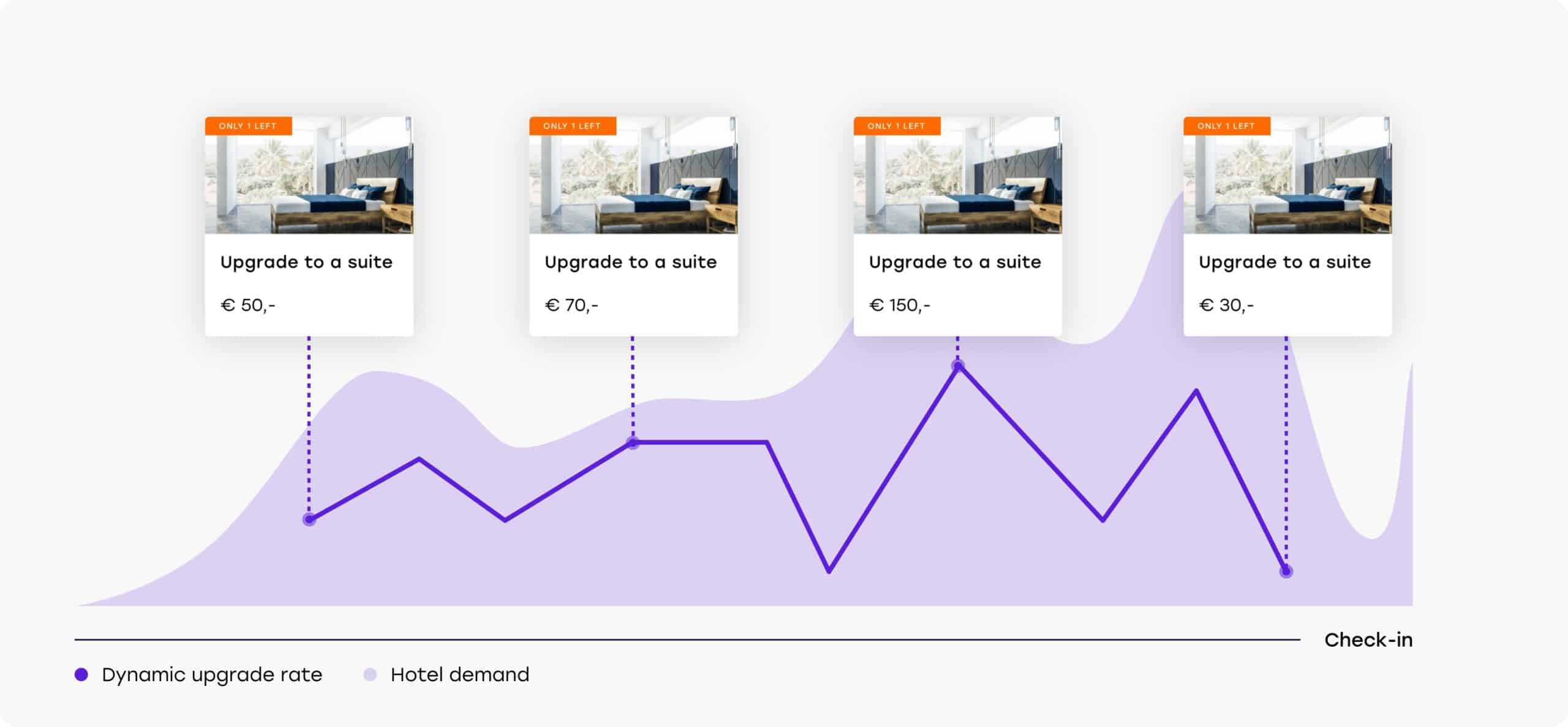
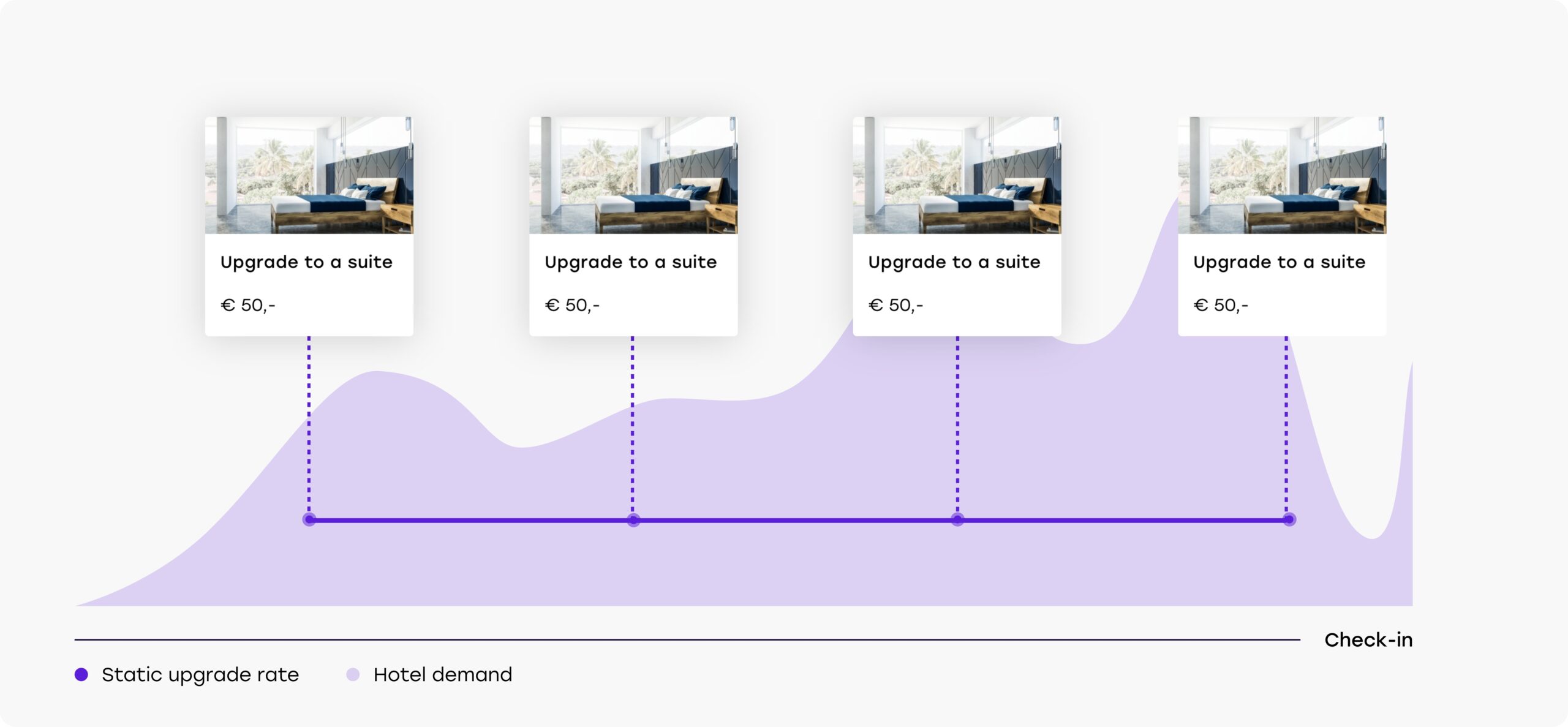
Embora esta abordagem tenha o potencial de aumentar significativamente o seu rendimento, dificilmente é possível fazê-lo manualmente. É aqui que entram os sistemas de gestão de receitas (RMS) de ponta. Eles avaliam as mudanças na demanda e sua disponibilidade para produzir de maneiras mais criativas e criar novas chances de maximizar a receita.
Aumente seus resultados de upsell com preços abertos
Muitos hotéis usam suplementos de categoria de quarto estáticos para definir o preço de suas vendas adicionais. Eles não levam em consideração mudanças de demanda ou disponibilidade. Embora o upsell dessa forma já possa trazer bons resultados, ainda deixa dinheiro na mesa.
“Muito poucos hoteleiros têm uma estratégia de upsell personalizada e ainda menos hoteleiros estão vendendo upgrades de quarto e serviços auxiliares com preços dinâmicos”, disse David Woolenberg, CEO da Duetto.
Agora imagine que você também pudesse aplicar preços abertos ao upsell. Novamente, seria quase impossível acertar fazendo isso manualmente. Mas se você puder integrar um RMS que suporte preços abertos à sua plataforma de upsell, poderá automatizar totalmente o processo. Isso significa que as taxas para suas vendas adicionais seguem os preços dinâmicos dos quartos. Como resultado, você pode estender a otimização de tarifas para outro ponto de contato da jornada do hóspede.
3 benefícios do upsell com preço aberto
Veja como você se beneficia do upsell com preços abertos:
1. Uma estratégia de upsell refinada: basear os preços para todas as categorias de quartos no seu BAR e ajustar as tarifas de acordo com a demanda, coloca você no controle total de suas tarifas. Isto também se reflete no seu aumento de vendas, onde você pode definir preços de suplementos para diferentes tipos de quartos, independentemente uns dos outros. Em vez de cobrar um valor fixo, é possível ajustá-lo de acordo com o nível de procura, o segmento de hóspedes ou o canal de distribuição. Resumindo, você pode criar uma estratégia de taxas totalmente nova especificamente para upsell.
2. Negações de atualização reduzidas: quando seu RMS e sua plataforma de upsell são integrados, eles compartilham automaticamente dados de disponibilidade em tempo real. Dessa forma, os hóspedes verão apenas as opções de upgrade disponíveis no momento. Isso torna o processo mais tranquilo porque é mais provável que eles recebam os upgrades pagos que tentam reservar. Os hotéis que utilizam esta tecnologia observam uma queda 34% nas solicitações de upsell rejeitadas.
3. Aumento da receita acessória: taxas dinâmicas em upsell podem aumentar os gastos dos hóspedes por noite de upgrade em até 45%. E tudo isso acontece em segundo plano, sem que sua equipe precise realizar nenhuma tarefa manual adicional.
Webinar gratuito: Otimizando sua pilha de tecnologia para lucratividade total
A plataforma de upsell Oaky e o provedor de RMS Duetto viram seus clientes alcançar tais resultados graças à integração dos sistemas lançada recentemente. Eles mostrarão como você pode implementar preços abertos e ver resultados semelhantes em seu hotel no próximo webinar. Registrar agora para levar sua estratégia de receita e upsell a um novo nível.
Especialmente em tempos difíceis, é crucial estar atento às mais pequenas flutuações do mercado e tirar o máximo partido de cada mudança na procura. A precificação aberta e dinâmica é uma forma eficaz de fazer isso. E se você automatizar o processo, tanto sua receita quanto sua equipe se beneficiarão imensamente.

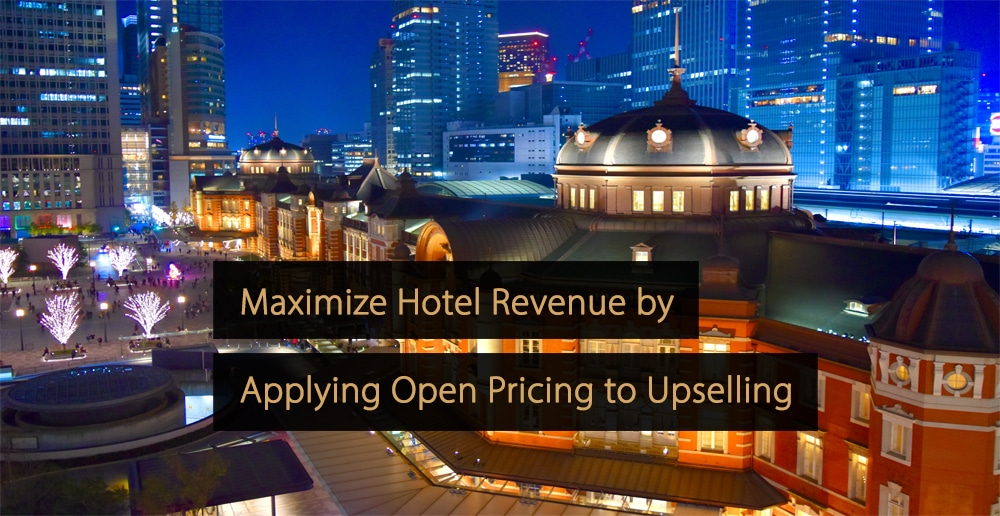

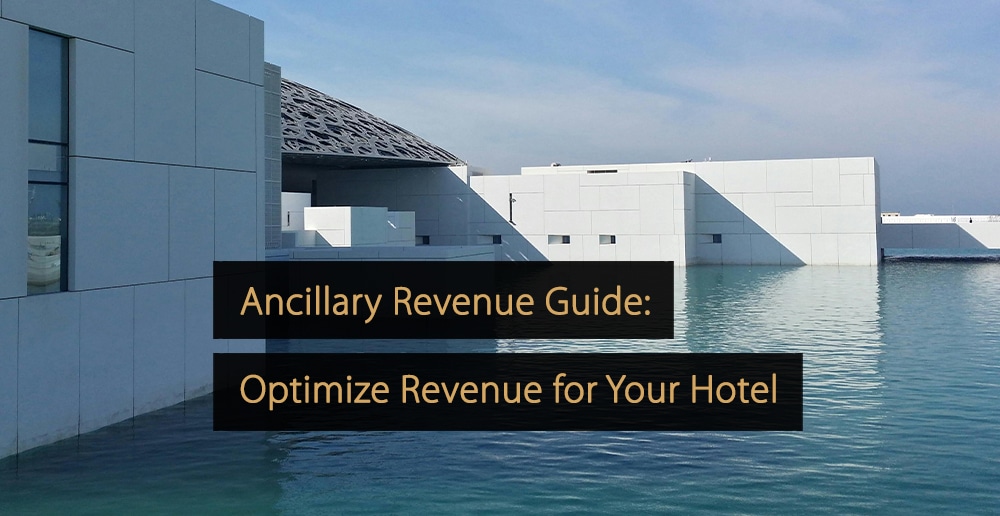
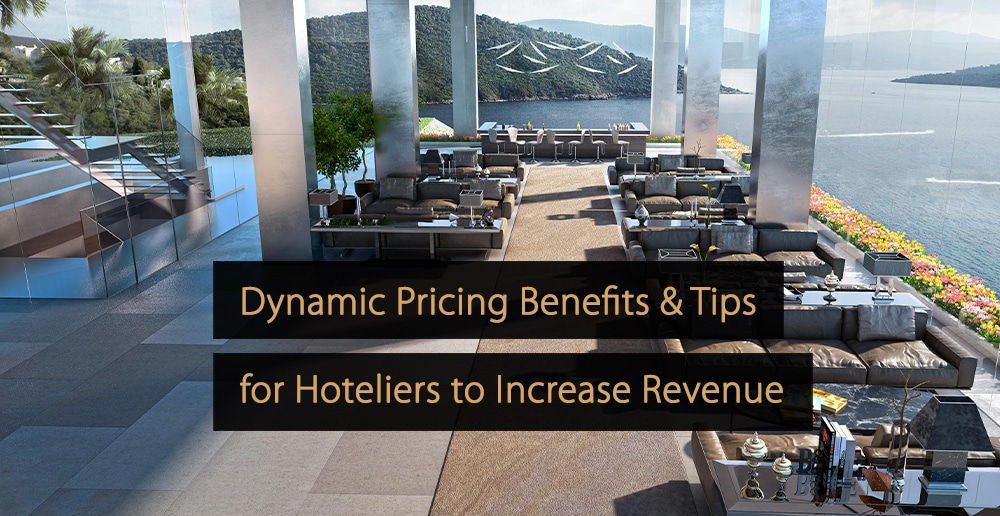


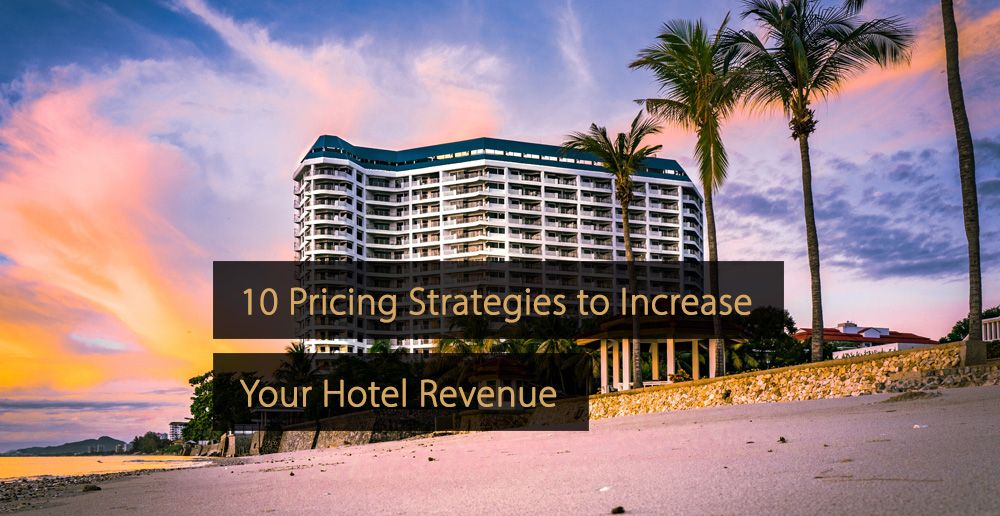
Leave A Comment